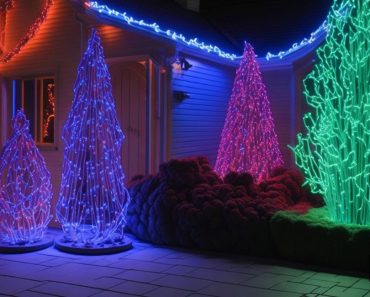
Science toys ignite curiosity and foster a love for exploration among young learners. For parents seeking to introduce their children to the wonders of the universe, a small telescope is an excellent choice for children aged 4-6. These telescopes are designed to be user-friendly, allowing young observers to easily explore the night sky and appreciate celestial phenomena.
When selecting a telescope for kids, it’s crucial to choose one that is both safe and engaging. A good telescope for kids not only enhances their understanding of astronomy but also encourages them to ask questions and seek answers. The right telescope can transform stargazing into an exciting adventure, making it a valuable tool in early science education.
By investing in a telescope, parents can provide their children with a solid foundation in scientific inquiry. This simple yet effective instrument can help develop critical thinking skills and a fascination with the natural world, making science toys an indispensable addition to any child’s playtime.
Understanding Telescopes
Telescopes are essential tools for observing distant objects in space. Their design and functionality stem from optical principles and a rich history. Various types of telescopes cater to different needs and levels of expertise.
Optical Principles of Telescopes
Telescopes operate primarily through two optical principles: refraction and reflection. Refracting telescopes use lenses to bend and focus light, while reflecting telescopes utilize mirrors to gather light.
Key terms include:
- Aperture: The diameter of the primary lens or mirror, determining light-gathering power.
- Focal length: The distance between the lens or mirror and the point where light converges, influencing magnification.
These principles allow telescopes to provide clearer images of celestial objects, making them increasingly important for astronomy and education.
History of Telescopes
The invention of the telescope dates back to the early 17th century. Hans Lippershey, a Dutch spectacle maker, is credited with the first patent in 1608. Galileo Galilei further advanced the telescope’s design, increasing its effectiveness for astronomical observations.
Significant milestones include:
- Keplerian Telescope: Introduced by Johannes Kepler in 1611, this design used two convex lenses, enhancing image quality.
- Newtonian Telescope: Developed by Sir Isaac Newton in 1668, it employed a concave mirror, allowing for larger apertures.
Over centuries, telescopes have evolved, paving the way for modern astronomical discoveries.
Types of Telescopes
There are several types of telescopes, each serving specific purposes:
- Refracting Telescopes: Ideal for lunar and planetary observation, these use glass lenses.
- Reflecting Telescopes: Common for amateur astronomers, using mirrors to prevent chromatic aberration.
- Catadioptric Telescopes: A hybrid design, these combine lenses and mirrors to balance size and performance.
These types vary in cost, portability, and complexity, catering to both beginners and experienced astronomers.
Selecting Science Toys for Education
Choosing the right science toys requires careful consideration of several factors to ensure they provide educational value and engage children’s curiosity. Identifying the benefits of these toys can guide parents and educators in making informed decisions.
Criteria for Choosing Science Toys
Selecting appropriate science toys involves evaluating various criteria. Key factors include age appropriateness, safety, and educational content.
- Age Appropriateness: Toys should match the developmental stage of the child. For instance, a small telescope designed for kids aged 4-6 should have simple features that facilitate basic exploration.
- Safety: Prioritize toys made from non-toxic materials and those that don’t have small parts that could pose choking hazards.
- Educational Content: The toy should encourage inquiry and exploration. A toy that explains fundamental concepts, like light and magnification in a telescope, enhances engagement.
- Interactive Features: Toys that promote hands-on learning, such as assembling models or exploring nature, often hold a child’s interest longer.
These factors can help ensure that the chosen toys support intellectual growth.
Benefits of Science Toys in Learning
Science toys significantly contribute to a child’s educational experience. They promote various learning styles and skills, leading to a well-rounded approach to education.
- Encouragement of Curiosity: Science toys inspire questions, leading children to explore concepts independently.
- Hands-On Learning: Engaging with toys like telescopes can cultivate practical skills. Children learn to observe, experiment, and draw conclusions based on their findings.
- Problem-Solving Skills: Many science toys require children to think critically and solve problems. This process fosters resilience and adaptability.
- Enhanced Understanding of Scientific Concepts: For instance, using a telescope to observe celestial bodies fosters an early interest in astronomy. This interest often leads to deeper studies in science and technology later.
Through these benefits, science toys lay a foundation for a lifetime of learning.
Telescopes for Young Astronomers

Choosing the right telescope for young astronomers introduces children to the wonders of the universe. The following sections explore the essentials of small telescopes and the features suited for ages 4 to 6.
Small Telescopes Overview
Small telescopes are ideal for beginners. They are portable, easy to handle, and provide a good entry point into astronomy for children. These models typically have a shorter focal length, making them easier for kids to use while learning to locate celestial objects.
Many small telescopes come with adjustable tripods. This feature allows users to quickly set the telescope at a comfortable height. Additionally, they often include simple finderscopes and basic optics, which help young astronomers locate and observe planets and stars. An example of a suitable model is available for those interested in a beginner’s telescope.
Telescope Features for Ages 4-6
Telescopes for kids aged 4-6 should prioritize user-friendly features. Lightweight materials make it easier for kids to carry and set up their telescopes independently. Adjustable eyepieces with lower magnification allow for easier viewing and comfort, preventing frustration during use.
Bright colors and fun designs can make the telescopes more appealing to young users. Safety is also crucial; telescopes should not have sharp edges. Accessories like star charts or simple software can enhance the learning experience, making it more engaging. Child-friendly telescopes often offer a stable base, ensuring a secure viewing experience for little hands.
Practical Tips for Telescope Use
Using a telescope can enhance the experience of stargazing and observing distant objects. Proper setup and observation techniques are essential for getting the most out of a telescope.
Setting Up Your Telescope
When setting up a telescope, choose a location away from bright lights and obstructions. A clear, level surface is ideal for stability.
Here are some key steps:
- Assemble the Telescope: Follow the instruction manual carefully. Ensure all parts are securely attached.
- Stabilize the Base: A sturdy tripod or base will minimize vibrations.
- Align the Finder Scope: Use a distant target to align the finder scope with the main telescope. This ensures easier targeting of celestial objects.
Check for adjustments in height and angle, allowing for comfortable viewing during extended sessions. Familiarizing oneself with the telescope’s movements can aid in quick and accurate observations.
Observation Best Practices
To maximize the viewing experience, it’s beneficial to adopt certain best practices during observations. The following steps can significantly enhance results:
- Choose the Right Time: Early evening or late night usually offers better visibility. Avoid times when the moon is full, as its brightness can obscure other celestial bodies.
- Allow for Cool Down: Before using, let the telescope acclimate to the outdoor temperature. This minimizes distortion from heat.
Dress warmly and ensure that surroundings are quiet to reduce distractions. Lastly, patience is crucial; it may take time to locate and focus on specific objects. Regular practice will lead to improved skills and enjoyment.





